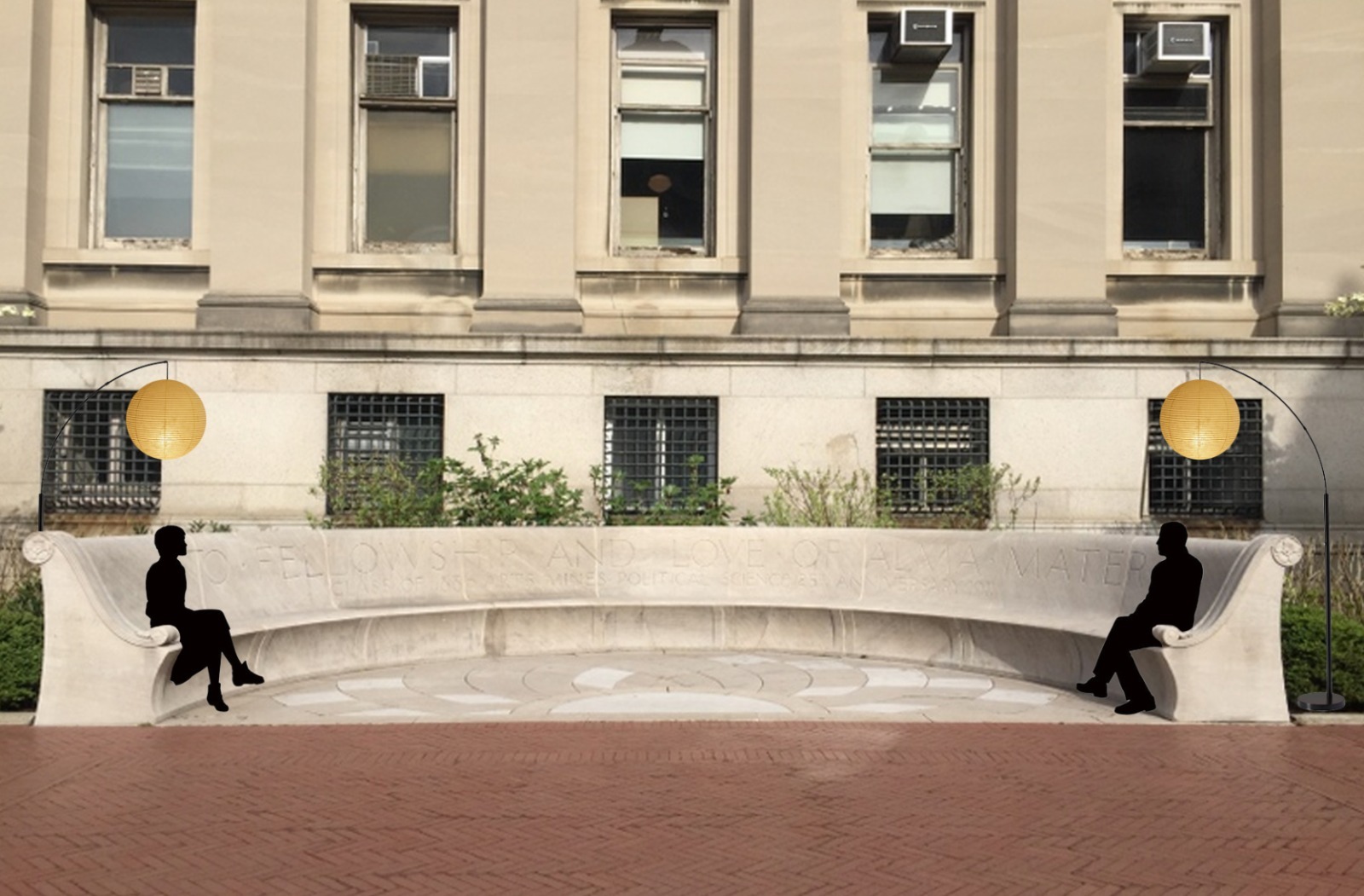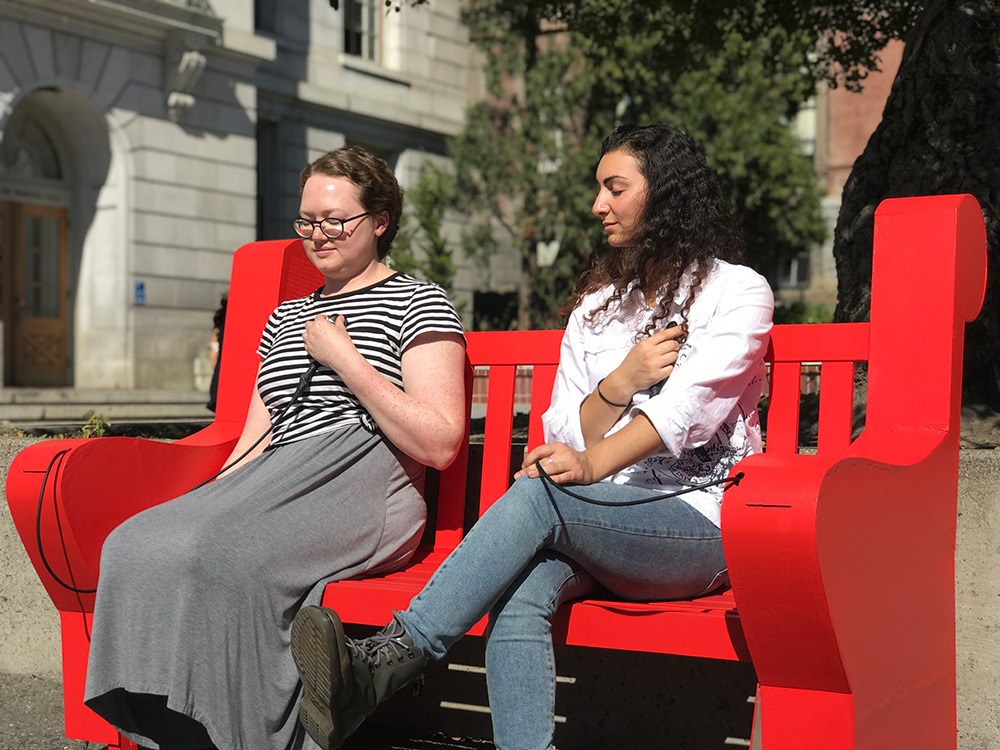Fostering Urban-Scale Social Interaction through Bio-Sensory Experiences
Team members: Annika Yu, Albert Rosario-Pichardo, Shannon Hui
Acknowledgments
We would like to express our sincerest gratitude to Professor Anthony Vanky for their relentless patience and guidance in the creation of this work. Without their wisdom and creativity, this effort would have been impossible, and our curiosity toward the urban opportunities of small data would remain unpursued.
We are also grateful to our classmates Tim Yoshimura Small, Kavyaa Rizal, Jane Cole, and August Nastasi for their support and participation in the development and implementation of our project. We further benefited from the expertise and patience of staff at the Columbia University SEAS and GSAPP Makerspaces.
Human emotion and connection are fleeting and oftentimes invisible. In a world where virtually every movement or behavior within public spaces can be translated into and recorded as data, our feelings remain private.
What’s the worst that could happen if the pulse of your heart is made public for the world to see? What if you could literally wear your heart on your sleeve?

Introduction
Our project delves into the conceptualization, development, and implementation of our iteration on life-affirming bio-sensing. Our project aims to challenge norms around data collection and bio-sensing, recognizing individuals for the sake of their existence, and allowing them to be complex and unknowable. The hope is that this recognition of an individual’s complexity and the resistance to data collection as purely empirical will allow individuals to embrace emotional vulnerability in public spaces by providing a platform for individuals to engage with their emotions.
“Affirming our shared existence and living in public space is an important part of the experience of city living. Moment of life-affirmation in city living can range from something as grand and celebratory as a public festival, to something as mundane as making space for someone to sit on the bus. Life-affirmation includes aspects of recognition, connection, and opacity.” – Noura Howell
Inspiration
Illuminated Heartbeats is heavily inspired by Nourah Howell’s research on life-affirming bio-sensing, which seeks to disrupt conventional bio-sensing paradigms. She aims to do this by emphasizing the recognition of individuals’ abilities to maintain opacity and complexity. Howell’s work highlights the significance of acknowledging the validity of others’ lives and existence beyond the identification of specific individual characteristics. For Howell, it isn’t about what the data says about the individual but rather how the data makes the individual feel. In a similar vein, our installation aspires to embody these principles by creating an environment where participants can authentically express themselves and their emotion in an urban setting.

Noura Howell, Greg Niemeyer, Kimiko Ryokai. 2019
“Whereas many biosensing technologies seek to recognize people by automatically detecting their identity or particular characteristics, life-affirmation reworks this notion of recognition toward the more fundamental recognition of others’ lives and existence as valid.” – Noura Howell
Motivation
The conceptualization of our installation originated from a desire to cultivate a space for people to be emotionally vulnerable through communal interaction in an urban environment. Situated on the Whisper Bench outside of Avery Library, our installation envisioned participants seated facing each other, with their hands placed upon a heart-sensing box that would visualize their pulse through an illuminating lamp. While our initial implementation only facilitated active sensing for individual participants, future iterations are poised to expand this functionality to accommodate passive sensing with pairs, fostering deeper communal engagement and dialogue.
Technical Setup
- Arduino and power source – The Arduino will be used to transmit and collect heart sensor data. Power is drawn from a 9V Battery or Power Bank.
- Heart Pulse Sensor – The Heart Sensor will be attached to the participant via finger pad.
- Laser Cut Acrylic Box – Within which the Arduino system will be stored, with the heart pulse sensor fixed to the top surface
- Neopixel – As a pulse is collected, the LEDs will pulse corresponding to the user’s heartbeat
- Paper Lantern Arc Lamp – The Neopixel will be embedded into a paper lantern fixed onto an arc lamp

Design Considerations
The design philosophy for the acrylic box was guided by two questions:
- How could we encourage individuals walking by our installation to participate, specifically without active encouragement?
- Once an individual is drawn to interact with the installation, how can their user experience be optimized for comfort and comprehension?



Challenges during Implementation
Throughout the development and implementation phases, our team encountered several notable challenges that necessitated several different solutions.
- Supply chain issues and delivery delays – Prompted the use of ad-hoc and found materials
- Fragile components – Components breaking during our building phase required quick replacements and necessitated stronger methods of holding components together, such as soldering.
- Sensor limitations – The pulse sensor’s inherent technical limitations produced inaccuracies and inconsistencies in measurement, which needed to be accounted for by the user experience.
- Soldering and laser cutting challenges – Technical support was externally sourced and enlisted from fabrication experts to ensure that our concepts could be manifested in reality.
Pilot Documentation
Pilot Observations
We successfully conducted pilot tests of the active, individual sensing implementation in two distinct locations: inside Avery Hall and on the benches between Avery and Uris Hall. A common observation among users was their initial curiosity about the transparent box housing the technical setup. However, the time it took for users to notice the pulsating lamp varied significantly. While some users immediately recognized it, others took slightly longer to do so. Notably, one user displayed a rapid increase in heartbeat upon realizing the presence of the light above them, suggesting a moment of surprise, followed by focused attention on the lamp.
In another instance, near the entrance to Avery Hall, a user exhibited a rapid change in pulse rate when another person entered the room. This suggests an elevated heartbeat possibly triggered by surprise or nervousness, perhaps stemming from concerns about how they might be perceived while connected to the box with a flashing red lamp overhead.
Urban-Scale Opportunities
Moving forward, we envision the potential expansion of this concept to encompass a broader urban scale. Our vision involves the creation of a suite of emotion-based architectural elements designed to serve as poignant reminders of our individual and collective emotions amidst the hustle and bustle of urban life. These architectural interventions, akin to art installations, are intended to offer a reflective experience for individuals, providing them with an opportunity to pause, observe, and simply be.
During periods of vacancy, the lanterns would emit a soft, non-intrusive light that mirrors the average heartbeat of individuals who have spent time within them. This data could serve as valuable insight for urban planners and place-making practitioners, enabling them to identify and transform spaces into more inviting environments.